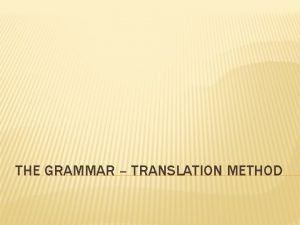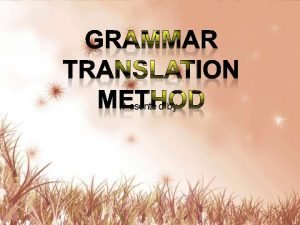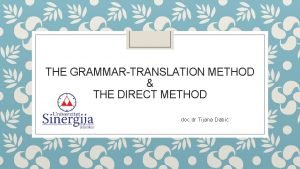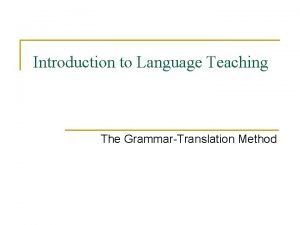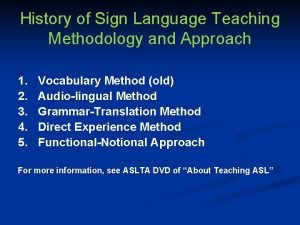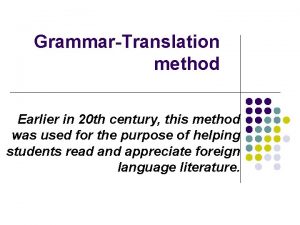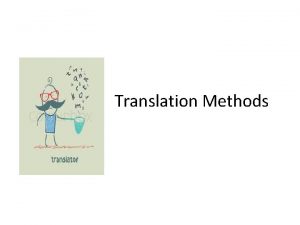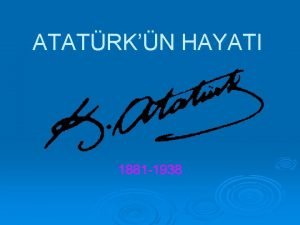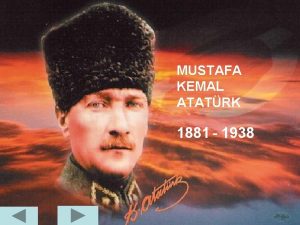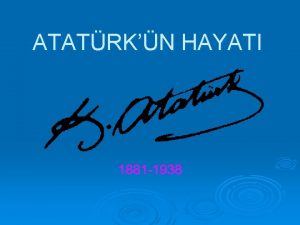Grammar Translation Method Karl Plotz 1819 1881 improved







- Slides: 7

Grammar Translation Method • Karl Plotz (1819 -1881) improved the teaching method; his method was divided into two parts; (1) rules and paradigms, and (2) sentences for translation into and out of the target language. His method also included rote learning of grammar rules, learning to put grammatical labels on words, and learning to apply the rules by translating sentences. This way of teaching was finally called the GTM.

The Principle of Grammar Translation Method • Grammar rules are presented and studied explicitly. Grammar is taught deductively and then practiced through translation exercise. • The primarily skills to be developed are reading and writing • Hardly any attention is paid to speaking and listening skills • Teacher correction is the only way to make students produce the right forms of the foreign language

• The goal of foreign language learning is the ability to understand the texts written in the foreign language • Mastering the grammar of the foreign language is essential in order for students to understand the written target language. • Vocabulary is learnt from bilingual word lists • The mother tongue is used as the medium of instruction • A paramount use of translation exercises is given.

Major characteristics of GTM • Classes are taught in the mother tongue, with little active use of the target language • Much vocabulary is taught in the form of lists of isolated words • Long elaborate explanations of the intricacies of grammar are given • Grammar provides the rules for putting words together, and instruction often focuses on the form and inflection of words • Reading of difficult classical texts is begun early

• Little attention is paid to the content of texts, which are treated as exercises in grammatical analysis • Often the only drills are exercises in translating disconnected sentences from the target language into the mother tongue. • Little or no attention is given to pronunciation • The focus is on accuracy, and not fluency.

Procedure of teaching GTM • The class reads a text written in the target language • Students translate the passage from the target language to their mother tongue • The teacher asks students in their native language if they have any questions, students ask questions and the teacher answers the questions in their native language • Students write out the answers to reading comprehension question

• Students translate new words from the target language to their mother tongue • Students are given a grammar rule and based on the example then apply the rule by using the new words • Students memorize vocabulary • The teacher asks students to state the grammar rules. • Students memorize the rule • Errors are corrected by providing the right answers

